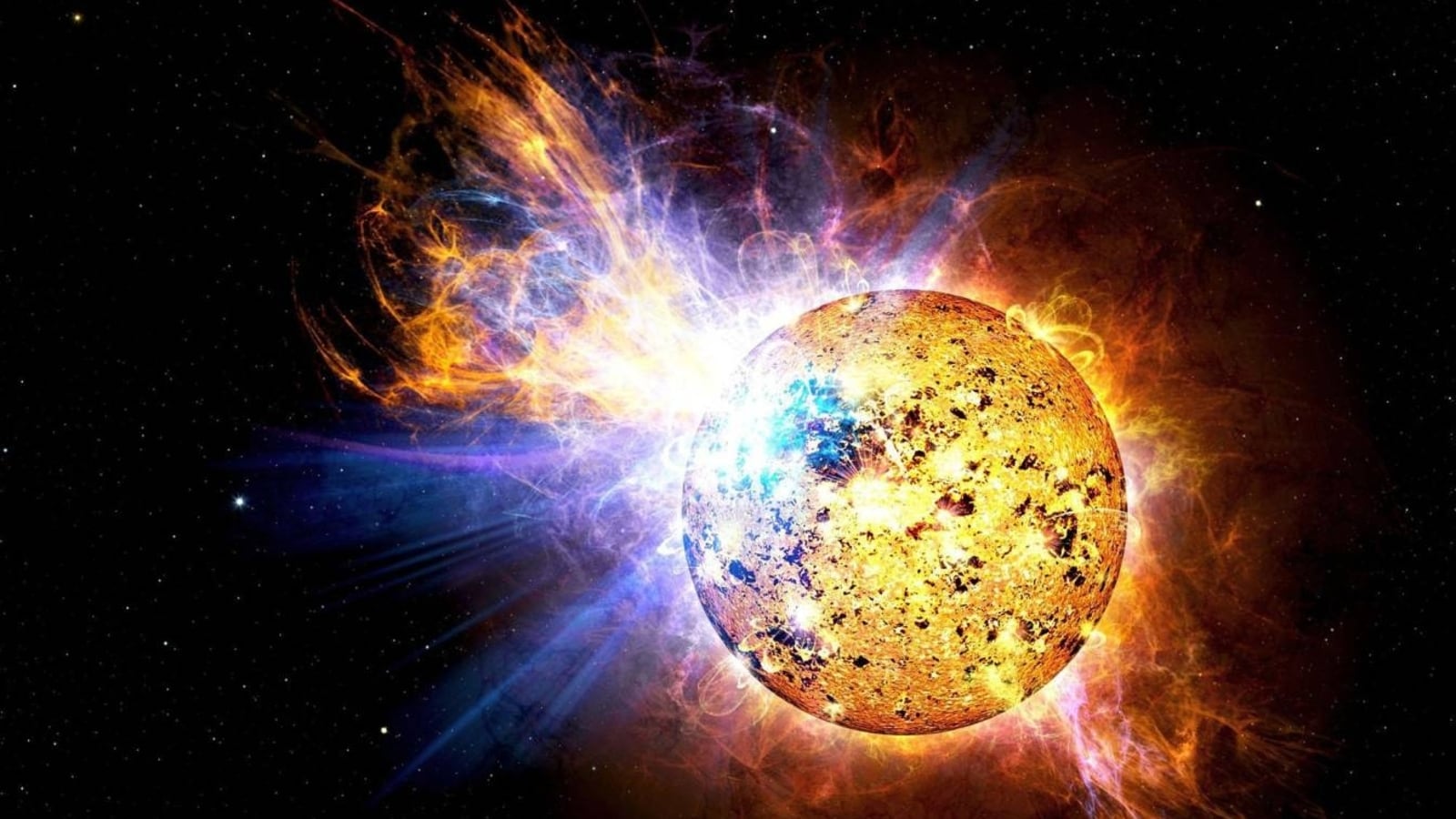
The solar activity on Earth has intensified. Yesterday, December 1, it was reported that a second coronal mass ejection (CME) was headed for the Earth which could turn the ongoing solar storm even more intense, and exactly that happened. A few hours earlier, the second CME made an impact and sparked an incredibly powerful G3-class solar storm. The storm resulted in some of the brightest aurora displays seen across the world. While it has begun subsiding slowly, a NASA model has shown that more CMEs are headed toward the Earth and might make contact with our magnetosphere before the end of the day.
According to a report by Spaceweather.com, “One and possibly two CMEs hit Earth's magnetic field on Dec. 1st, sparking a strong G3-class geomagnetic storm. At the apex of the event, just before sunrise on the US west coast, auroras were photographed in the USA as far south as Arizona and California”.
The report also addressed the NASA model that predicts extended solar storms due to further CME bombing. “Are more CMEs on the way? Maybe. On Nov. 27th and 28th, the sun launched at least 3 CMEs toward Earth. The biggest one probably swept up some of the storm clouds in front of it, forming a Cannibal CME. It's possible that today's impacts account for all of those CMEs, but we can't rule out another impact before the day is over,” it added.
Strong solar storm hits the Earth
Dr. Tamitha Skov, the popular space weather physicist, was also busy reposting people's photographs of auroras seen across the world. Responding to an image of auroras seen in New Mexico in the US, Skov said, “Woah. That would be totally insane if it turns out to be #aurora this far south during this ongoing #solarstorm”. She also reposted a post that showed intense red auroras in Mongolia, highlighting the weakening of the phenomenon. “Intense! Extremely red #aurora were seen over Mongolian skies this morning during the initial impact of this ongoing #solarstorm. Sadly, we wont reach G3-levels again, as the second half of this storm is turning out to be much weaker than the first half,” she said.
How NASA SOHO watches the Sun
NASA's SOHO is a satellite that was launched on December 2, 1995. It is a joint project between NASA and the European Space Agency (ESA) to study the sun, its atmosphere, and its effects on the solar system. Equipped with 12 scientific instruments, such as an Extreme Ultraviolet Imaging Telescope (EIT), Michelson Doppler Imager (MDI), LASCO (Large Angle and Spectrometric Coronagraph), and others, SOHO captures images of the sun's corona, measures the velocity and magnetic fields of the sun's surface, and observes the faint corona around the sun.
https://news.google.com/rss/articles/CBMimQFodHRwczovL3RlY2guaGluZHVzdGFudGltZXMuY29tL3RlY2gvbmV3cy90d28tY21lcy1oaXQtZWFydGgtc3BhcmstZXh0cmEtc3Ryb25nLXNvbGFyLXN0b3JtLW5hc2EtbW9kZWwtc2hvd3MtbW9yZS1jb3VsZC1iZS1vbi10aGUtd2F5LTcxNzAxNDk1Njg5MjM5Lmh0bWzSAZ0BaHR0cHM6Ly90ZWNoLmhpbmR1c3RhbnRpbWVzLmNvbS9hbXAvdGVjaC9uZXdzL3R3by1jbWVzLWhpdC1lYXJ0aC1zcGFyay1leHRyYS1zdHJvbmctc29sYXItc3Rvcm0tbmFzYS1tb2RlbC1zaG93cy1tb3JlLWNvdWxkLWJlLW9uLXRoZS13YXktNzE3MDE0OTU2ODkyMzkuaHRtbA?oc=5
2023-12-02 05:44:55Z
2609063560
Tidak ada komentar:
Posting Komentar